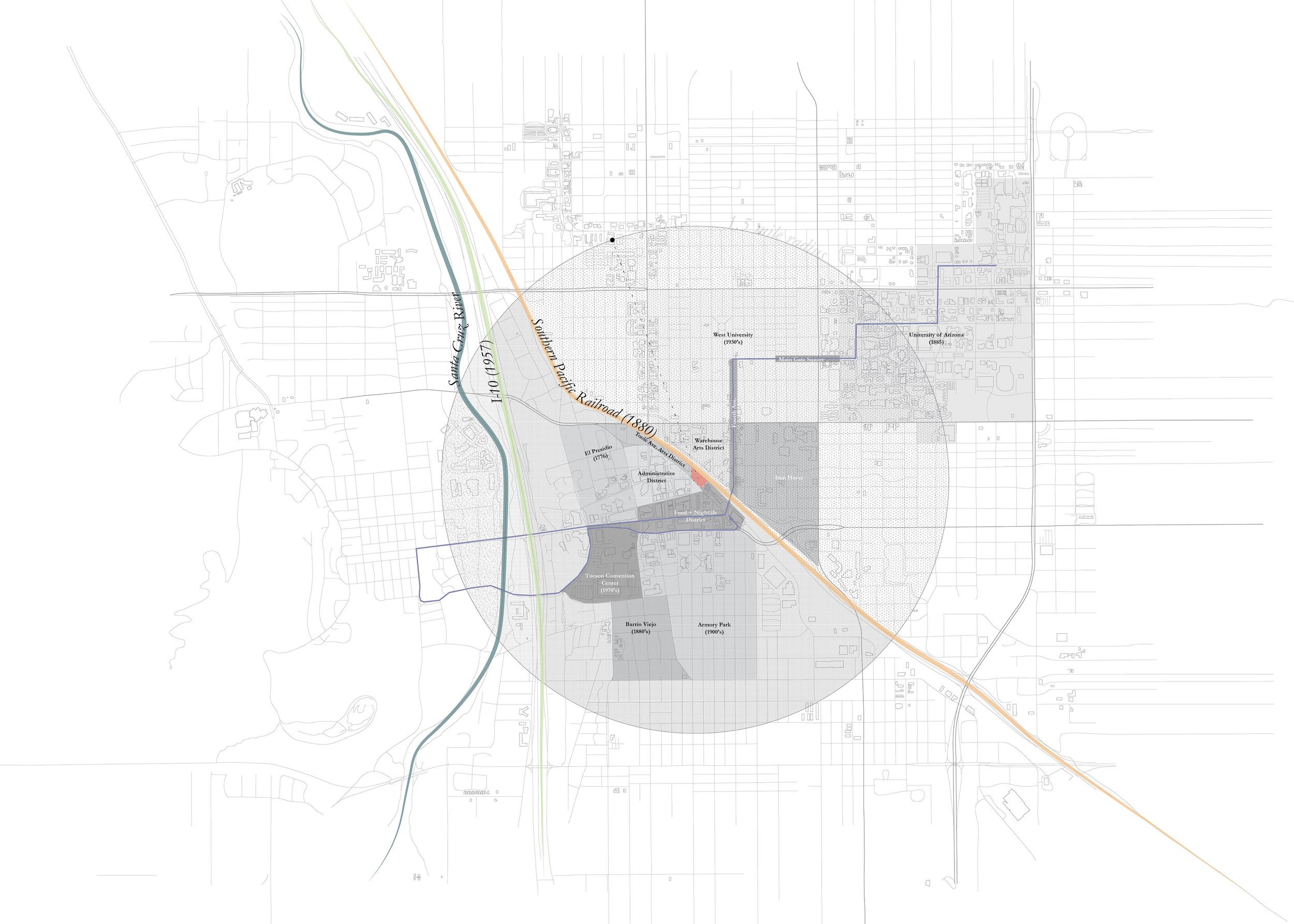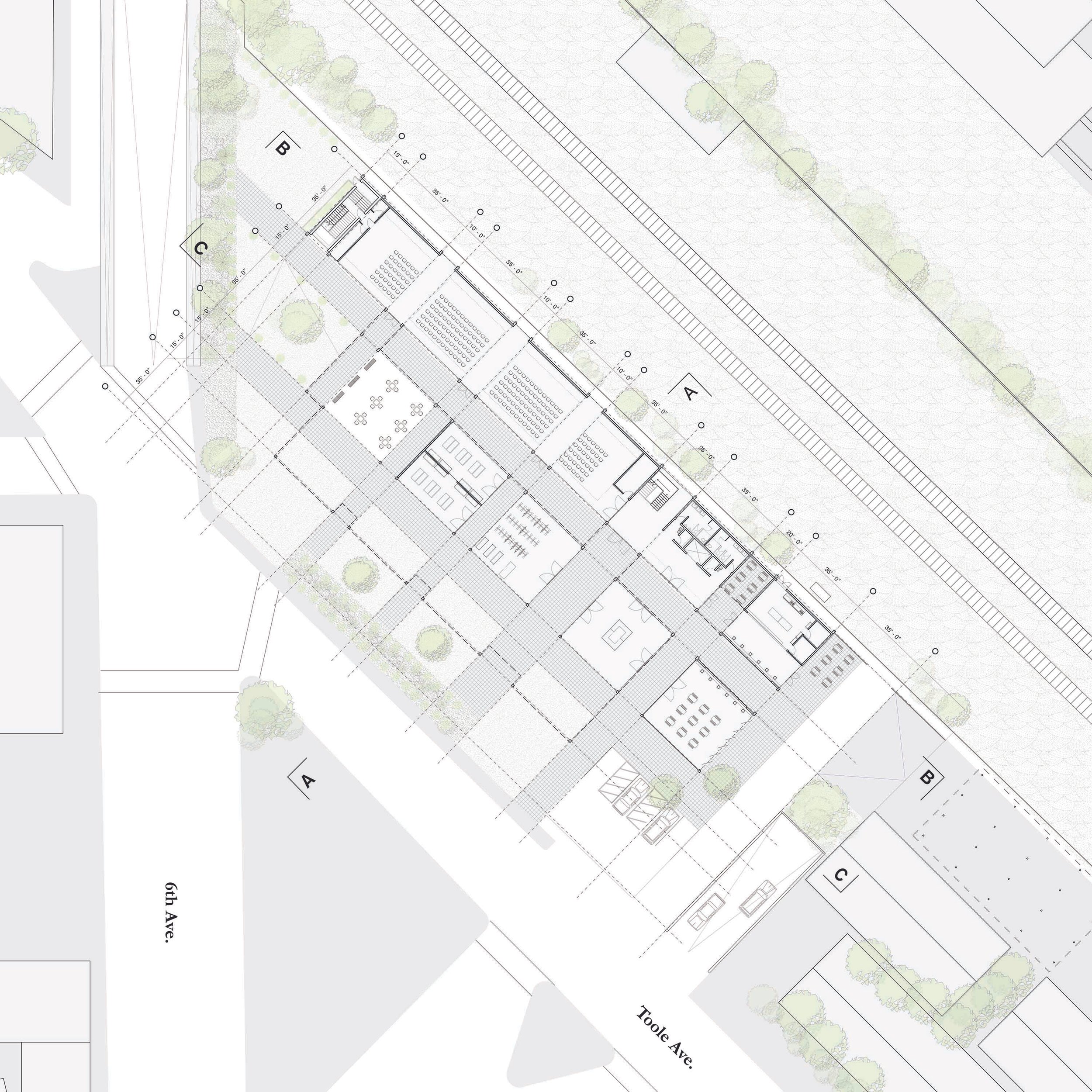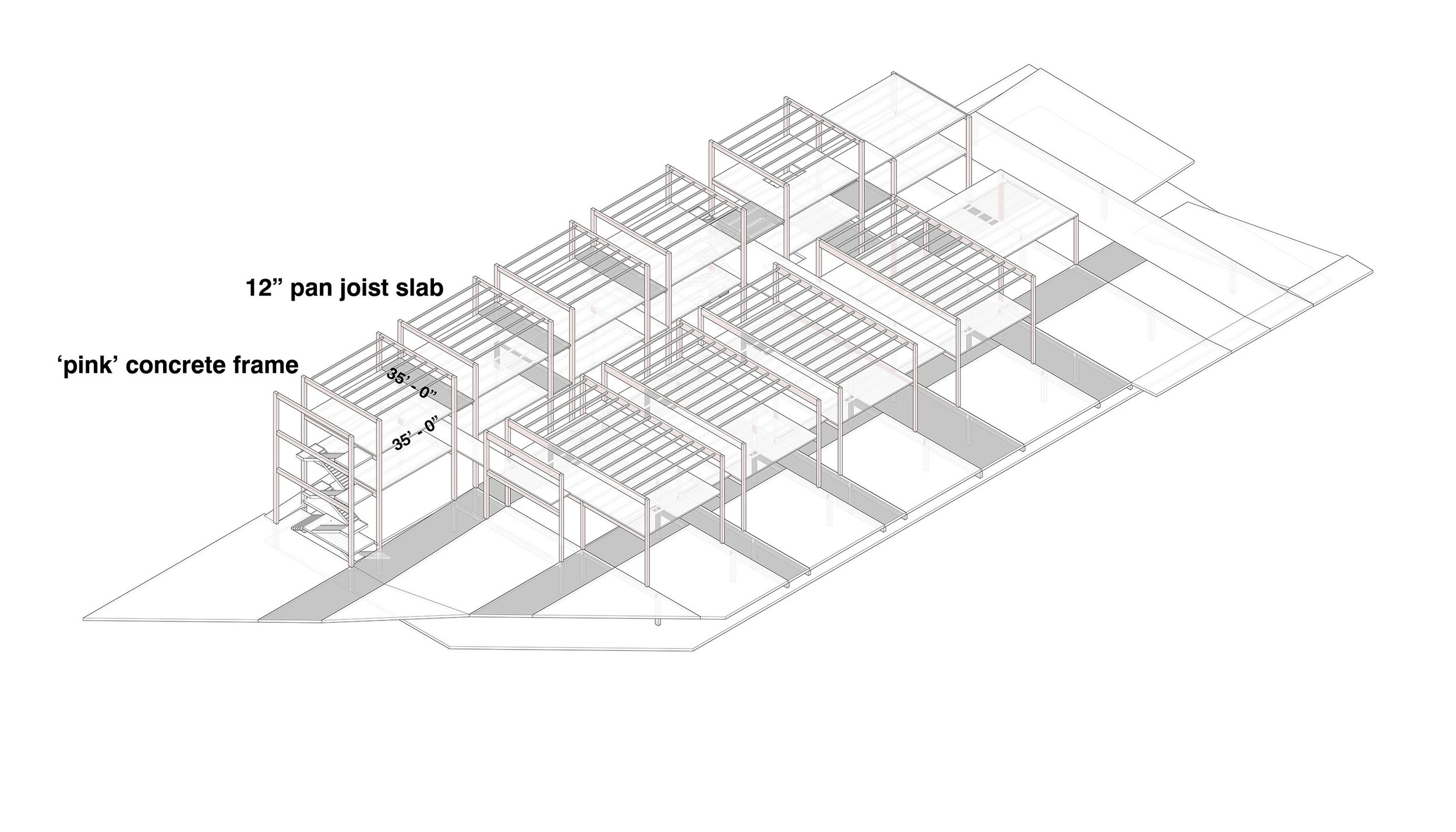TUCSON CULTURE STATION
SUMMARY
Tucson Culture Station Project
DATE
12.2017
LOCATION
Tucson, Arizona
TEAM
Zechariah Fung
TYPE
Academic Project
4th Year - Undergrad Studio
A culture center must carry an understanding of the historical context of the city’s built environment, specifically the neighboring Tucson Station, which served as the city’s main economic nexus and connection point until the arrival of the I-10. The station celebrates local materiality, the economic legacy of the train, and the resounding presence of the Santa Catalinas in the sky. It does not act to serve as a displacement of the existing station and its program but as a complement. The proportion of the form is derived from existing site datums established by traffic flow and the arrangement of the Station’s masses.
SITE / CONTEXT
The culture station is situated along a regular grid; like most American cities Tucson is built mainly along a regular orthogonal grid of streets yet there is vibrancy and individual ingenuity in many of the neighborhoods. The Tucson Culture Station seeks to celebrate the in-between spaces, the indoor-outdoor spaces that seek to integrate the built tectonic and the natural climate. The in-between spaces here serve as view corridors that provide ‘glimpses’ of light, sound and wind.
The building interfaces with the existing station by gradually sloping away from the existing context towards its max height. The cafe is juxtaposed against the ‘train pavilion’, blurring the dividing property line.
The Tucson Culture Station draws upon existing site datums and the existing linear palette to create an extension that celebrates the existing yet suggests contemporary applications within this framework. The frame and partition system allows for flexible layout in a rapidly changing downtown.
CONCEPT
Floor Plan
The southern building utilizes a screen that wraps down and becomes a a spatial ceiling for the public outdoor space. The same modular curtain system is utilized for the interior ceilings as well. The Skin rotates ever so slightly to suggest entry and to mark thresholds, mainly the transition between the Assembly and the main longitudinal axis.
CONSTRUCTION










